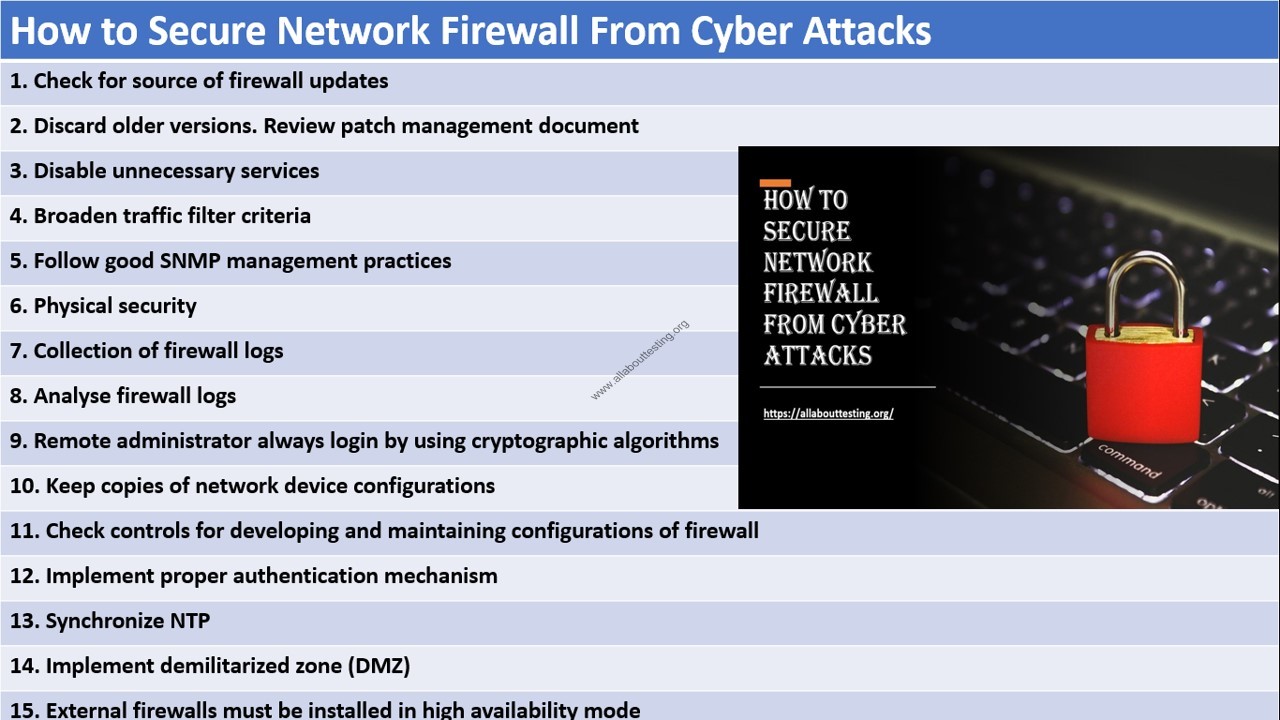How to Secure Network Firewall From Cyber Attacks [Updated 2024]

A firewall is the first line of defense for any cyber attack. Click Here If you are interested to see the 30 Points Firewall Security Audit Checklist. In this article, we will discuss generic security features needed to save network firewalls from cyber attacks.
- Make sure firewall updates are coming from an authentic source by employing cryptographic techniques such as digital signature and hashing mechanisms.
- A proper mechanism is there to verify newer versions. Automatic checks should be there not to allow older versions to update. Document the process of patch management and get approval from management.
- Check for unnecessary services and disable them if not required.
- Filtering mechanism based on but not limited to the source IP address, destination IP address, protocol, port number, rate of arrival, packet behavior, etc.
- Follow good SNMP management practices and implement them.
- Physical security of network infrastructure is foremost important. Without secure physically, any security mechanism is futile.

- Firewall logs are essential for identifying problems in the network. Logs may have information regarding the startup and shutdown of the firewall, updates, tasks performed by an administrator, automatic self-tests, etc. Logs should be stored in a separate central log server.
- Firewall logs are a lot of data, and manually searching the problems is next to impossible. It is recommended that a query or search mechanism be there to identify problems in the firewall quickly.
- Remote administrators should always log in by using cryptographic algorithms of key sizes of at least 2048 bits. Algorithms may be RSA, SHA-224, SHA-256, SHA-384, and SHA-512.
- Always keep copies of network device configurations in a secure location.
- Always check controls for developing and maintaining configurations of the firewall. Take approval of secure configuration from management. Implement it and reviewed it by both internal and external Auditors.
- Protect the firewall by implementing proper authentication mechanisms. Console port access is critical. Recommended using two-factor authentication.
- Synchronize the time of the firewall by using the Network Time Protocol (NTP).
- Implement the demilitarized zone (DMZ) to enhance security.
- External firewalls must be installed in high availability mode. If one firewall is not working, another firewall may take over the operation.
Conclusion
In this article, we have listed 15 security features that are needed to implement to secure them from cyber attacks.
Subscribe us to receive more such articles updates in your email.
If you have any questions, feel free to ask in the comments section below. Nothing gives me greater joy than helping my readers!
Disclaimer: This tutorial is for educational purpose only. Individual is solely responsible for any illegal act.









